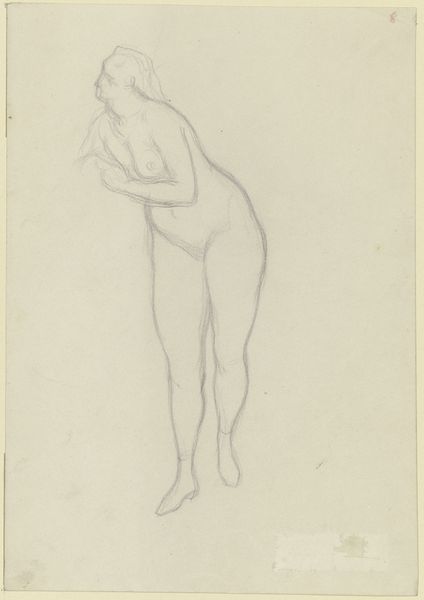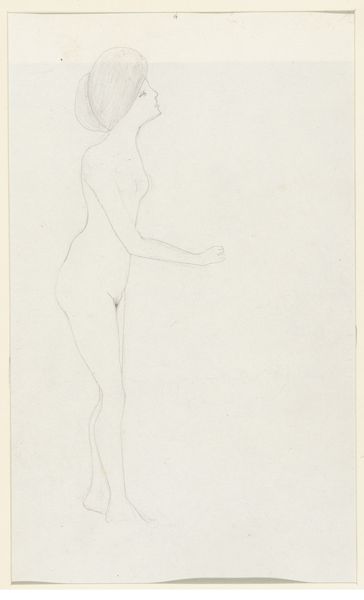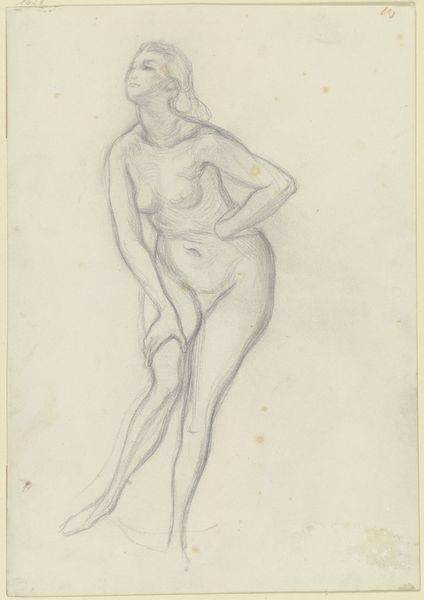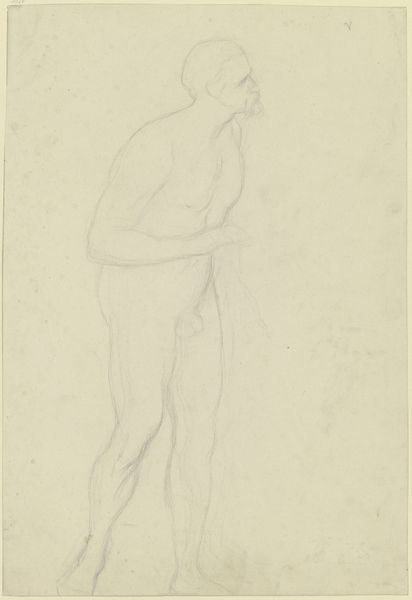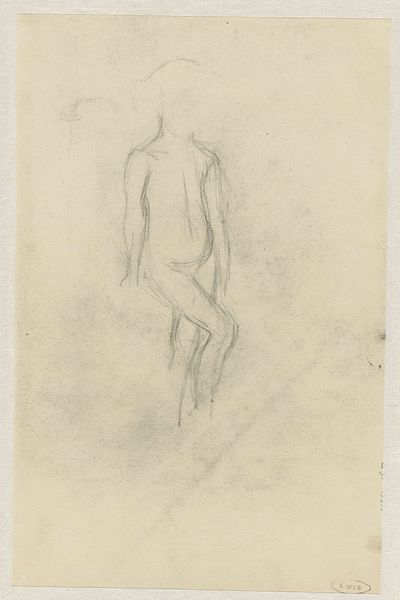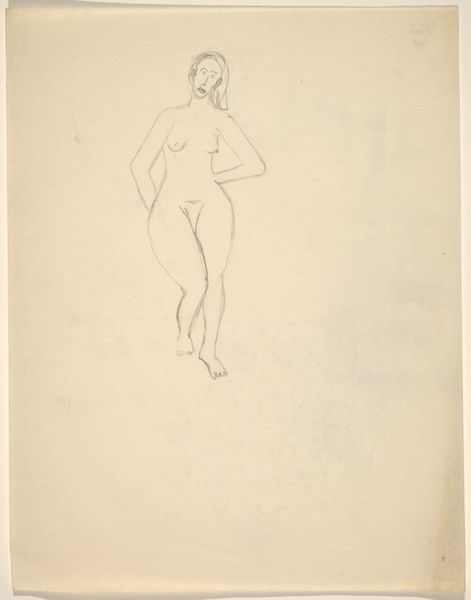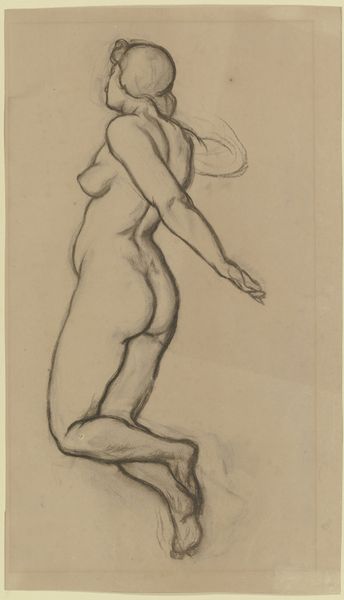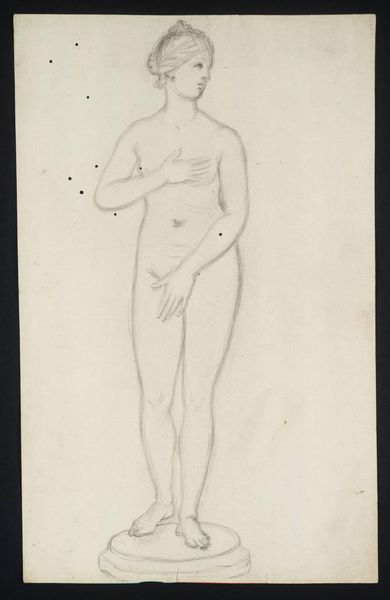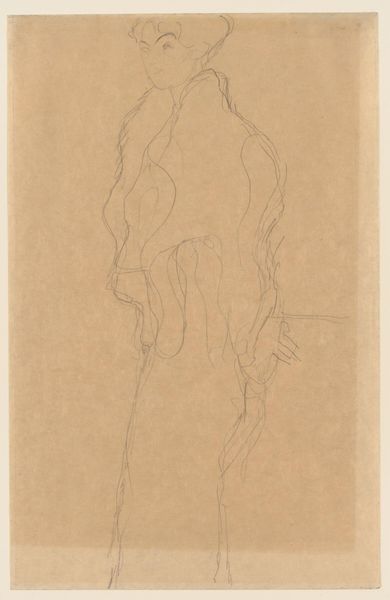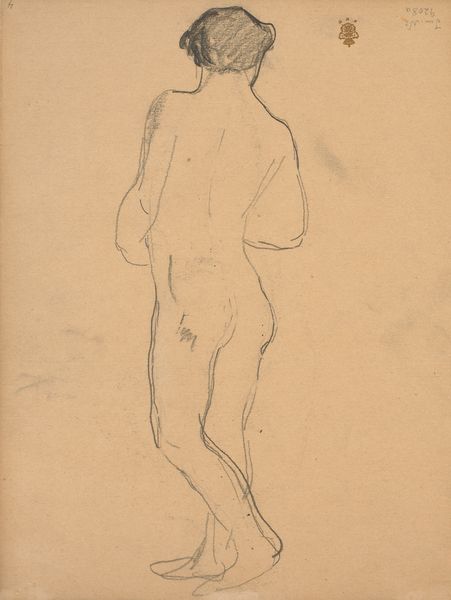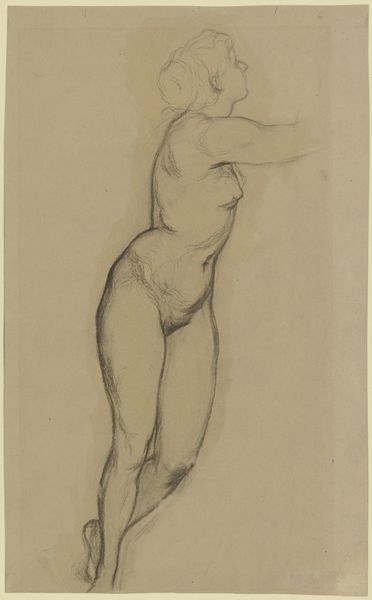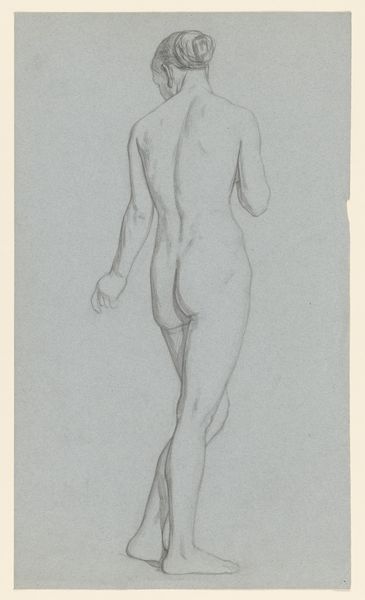
drawing, pencil
#
portrait
#
drawing
#
pencil sketch
#
figuration
#
pencil
#
nude
#
realism
Dimensions: height 190 mm, width 290 mm
Copyright: Rijks Museum: Open Domain
Editor: Here we have Jozef Israëls's "Schets van een naakt kind", a pencil drawing dating from sometime between 1834 and 1911. There's something so vulnerable in this quick sketch of a nude child. What strikes you when you look at this piece? Curator: The child's anonymity is powerful. The lack of facial features forces us to confront broader societal attitudes towards childhood in the late 19th century. How do you think the emerging realist movement impacted portrayals of children at this time? Editor: Well, maybe the Realists sought to move away from idealized or romanticized versions and focus on the everyday realities? Curator: Exactly! Realism, with its focus on truth and objectivity, challenged earlier sentimental depictions. This sketch, while incomplete, perhaps suggests a turn towards a more truthful representation of the human form, even in childhood. Was there a market for this type of work? Or would the artist create these only to refine their style? Editor: Good question. Since it is a sketch, my guess is it wasn’t meant for public consumption. How do sketches function in an artist's practice? Curator: Sketches are vital. They allow artists to explore form, light, and composition privately, free from the constraints of the market or public opinion. This freedom could, in turn, lead to more honest and groundbreaking work. Editor: So this drawing might have allowed Israëls to grapple with new ways of representing the body without the pressures of societal expectations? Curator: Precisely. It serves as a window into his artistic process, revealing the socio-political forces shaping his creative choices. I see so much in such simple art, don’t you think? Editor: Definitely. It’s fascinating to consider how even a sketch like this can reflect larger cultural shifts.
Comments
No comments
Be the first to comment and join the conversation on the ultimate creative platform.

